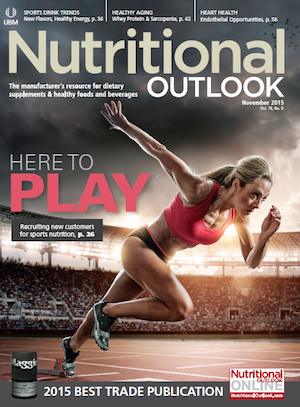Ingredient Identification in the Time of FSMA
What firms must know in terms of specifications, verification, and validation
Photo © iStockphoto.com/Jill Chen

A trend is persistently growing among consumer advocates to know more about food and dietary supplements, the ingredients added to them, and even the packaging in which the finished product is sold. This call for manufacturer transparency includes a demand for simple to read, “clean” labels, with fewer multi-syllabic chemical names and, most specifically, a decrease in the use of preservatives and processing aids.
The U.S. Food and Drug Administration (FDA) feels the heat from consumers as well and has declared its interest in more transparency in all phases of U.S. food production, as described in the recent release (September 17, 2015) of the Food Safety Modernization Act (FSMA) final rule. In the agency’s words, FSMA’s goal is “to better protect human and animal health by helping to ensure the safety and security of the food and feed supply.”1
Especially now under FMSA, it is crucial that firms know the basics of ingredient identification. Ahead, we outline some key points.
Specifications: Know Your Ingredient
In order to make a uniform, consistent, and safe product, a manufacturer must have specifications that define each ingredient. Specifications should state characterizing information critical to the identity of the ingredient, such as data on chemical and physical properties. These can be used as a metaphorical “fingerprint” for identification and also provide the appropriate analyses that help ensure the safety of an ingredient by defining the tests to be conducted to analyze for contaminants. A specification sheet should include information on the detection method, along with the acceptance criteria for each test.
In the regulations for the manufacture of dietary supplements, FDA states that individual components of a product should have specifications established to: (1) confirm the identity of each component; (2) ensure that the purity, strength, and composition of any produced final product are met; and (3) place limits on the types of contamination that may adulterate or may lead to adulteration of the finished product.2 The guidance for the specifications of ingredients added to dietary supplements is consistent with regulations for establishing the safety of food additives under the food additive petition (FAP) process and, by extension, generally recognized as safe (GRAS) substances, which state that “specifications for identity and purity of the petitioned food additive should be proposed.” The FDA guidance3 for food additives indicates that the following criteria are necessary to identify, characterize, and define purity of a new ingredient. In FDA’s words:
1. A description of the food additive (e.g., physical form, odor, color, and solubility). For food additives derived from natural sources, the sources themselves should be clearly identified.
2. Identification tests for the food additive, including the method(s) used or reference(s) for a suitable method(s)
3. An assay of purity for the additive, including the method used or reference for a suitable method
4. Physico-chemical characteristics of the food additive (e.g., ash content, moisture content, melting point, density, refractive index, pH)
5. Parameters related to the particle size, shape, and surface properties of the food additive, as appropriate, if particle size is important for the identity and functionality of the additive
6. Limits for impurities and contaminants
a. A limit for lead should be proposed. In addition, limits for arsenic and heavy metals, such as cadmium and mercury, should be considered when their presence needs to be controlled.
b. Limits for any known natural toxicants or for microbial contaminants in or on a food additive derived from a natural source should be proposed.
c. Limits for residual reactants, reaction by-products, and residual solvents should be proposed.
The acceptance criteria for specifications are typically numerical ranges for the described tests, and each batch of the ingredient must fall within these ranges to be considered acceptable for use in production of the final product. Occasionally, specifications comprise qualitative criteria, such as for color or physical form or appearance such as granule or powder and in the case of the latter two, particle size and distribution, etc.
The determination of food additive or GRAS status is based on the safety of the product, which is determined by toxicity testing conducted on an ingredient with certain specifications. If an ingredient is used in the product that does not meet specifications, there is a chance that it could have toxic contaminants from an alteration in the production process that led to the out-of-spec product. Further, if a substance does not meet specifications of the original GRAS or FAP, it is not considered to be the ingredient that was approved and, thus, FDA considers the ingredient an adulterant.
Examples of specifications for ingredients may be found in the Food Chemicals Codex (FCC),4 a compendium of nationally recognized standards for the purity and identity of food ingredients. Specifications may be submitted to FCC, but this is only on a voluntary basis. Specifications must be focused enough such that they define and describe the ingredient, but not so unreasonably strict that a significant number of individual batches would need to be discarded for reasons that are not of a safety concern. An example of a hypothetical specification sheet for a novel food oil is provided in Table 1 on page 70. For food additives, FDA requests that five batches be evaluated (three of which are nonconsecutive) and meet the specifications. These “batches” do not need to be commercial-size production batches, but can be a smaller, “pilot plant” size; however, “bench-top”-type batches may not be truly scalable and may not represent commercial production run. The request for the batch analysis is to determine if the company can consistently produce an ingredient that meets the specifications the company has set for itself.
STORY CONTINUES ON PAGE 2

Prinova acquires Aplinova to further increase its footprint in Latin America
April 7th 2025Prinova has recently announced the acquisition of Brazilian ingredients distributor Aplinova, which is a provider of specialty ingredients for a range of market segments that include food, beverage, supplements, and personal care.






















